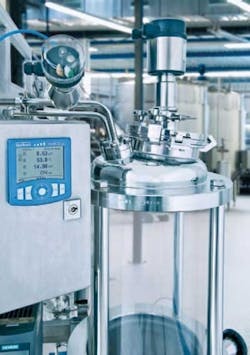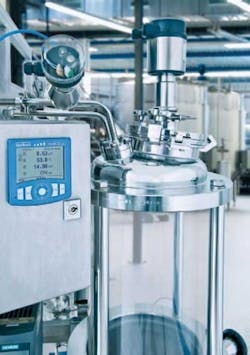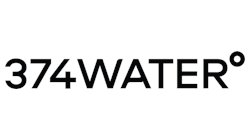by Christof Kundel
Reverse osmosis systems play a central part in water treatment and are gaining acceptance in a variety of industrial applications, including purifying process water, desalinating seawater or for producing ultra pure or pharmaceutical water.
Monitoring and controlling the water feeding into an RO system is critical to maintaining membrane health and performance. The Fluid Control Systems specialist Bürkert has developed the MultiCell 8619 multi-channel controller for use in reverse osmosis systems. The controller can be used for monitoring functions, as a flow indicator, to measure the ORP value or percentage retention value. It also can be used for control tasks, such as regulation of the pH value and the dosing of chemicals and ratio control.
The Bürkert MultiCELL 8619 is a versatile module for central monitoring and control tasks in water treatment systems
The modular controller is adapted at the factory to the particular application and customer specifications. The standard version includes the user interface, the mainboard and AC adapter, two analog and digital outputs and two digital inputs. Six slots are available for connecting additional boards. The configurable graphic display with backlighting can display up to four readings simultaneously. Further parameters and user-specific pages can be displayed by scrolling.
The digital and analog signal outputs enable the transfer of process data and status signals. If more than two of these are needed, an output card with two additional digital and two additional analog outputs can be installed. All process values also can be stored on SD cards by means of an optional data logger package for computer analysis using any standard software package.
"The modular design of the new controller makes it possible to implement numerous customized configurations for reverse osmosis systems," said Volker Erbe, Product Manager Sensors at Bürkert. "The uses range from single-channel measurement to complete monitoring of the water quality in reverse osmosis systems."
Flow Transmitter or Controller
In the simplest application, the 8619 MultiCell controller can be used as a flow transmitter. For this purpose, the only hardware needed is the mainboard; if required, an additional PID control can be implemented via software. The two digital signal inputs of the mainboard are used as pulse inputs for flow rate measurement. Depending on the task, the flow rate can either be simply measured and displayed or sent to a PLC via the signal outputs. With the optional PID controller software function, however, flow rate control is possible with two independent control loops. The two digital or analog signal outputs then serve as control signals for pumps or control valves.
Single-Channel Analysis Transmitter
For use as a single-channel analysis transmitter the mainboard is equipped at the factory with a signal input card for pH/ORP or conductivity. If several values are to be processed, an additional input card is required for each value. A typical application for single-channel controllers is pH neutralization in industrial wastewater treatment.
Conductivity Measurement
A typical "ultra pure water skid" consists essentially of a reverse osmosis unit and an EDI module. For monitoring the water quality, a conductivity measurement is necessary upstream and downstream of the RO module and downstream of the EDI module. In addition, the temperature is measured downstream of the EDI module to ensure uncompensated conductivity monitoring with a separate temperature display in compliance with the USP standard if required. For this application the 8619 requires three signal input cards for conductivity and, for transfer of the signal to a PLC, one additional signal output card. Therefore, all parameters can be sent as analog signals. The temperature compensation often required for ultra pure water is already a standard feature of the unit.
Monitoring Water Quality
In industrial reverse osmosis systems, very high demands are placed on the water quality. Less than optimal quality, for example in beverage production, directly affects the flavor of the end product. Accordingly, numerous central parameters in the system have to be monitored and controlled. Especially important is the ratio of permeate to concentrate, the ion retention capacity of the unit, the pH value in the feed water and a minimum amount of chlorine in the supply. This means that the flow rate of permeate and concentrate, the conductivity of the feed water and permeate, as well as the pH and ORP values of the feed water have to be monitored.
For these extensive tasks the 8619 MultiCell is expanded by adding two signal input cards for conductivity and two signal input cards for pH/ORP. If the process values are to be sent to a higher-level PLC, two additional signal output cards are also needed. The required software functions are flow rate measurement and the PID function.
About the Author:Christof Kundel is Segment Manager Water Treatment at Bürkert Fluid Control Systems.
Past IWW Issues



